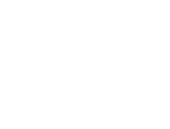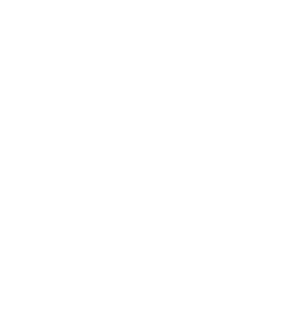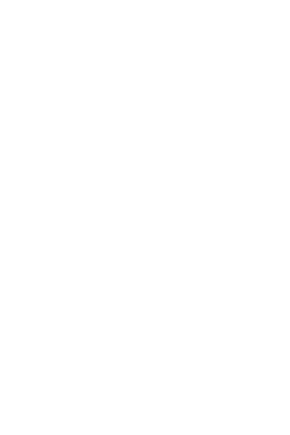 |
 |
 |

|
Hassan Khan, The Knot, 2012 (detail)
© Atelier de numérisation de la Ville de Lausanne
|
|
 |
LE VERRE VIVANT II
RECENT ACQUISITIONS BY THE GLASS ART COLLECTION 2012-2014
18/3/2-15-1/11/2015
Living Glass II is the second installment of the mudac’s latest contemporary glass art exhibition and presents a broad selection of works and installations by today’s glass creators of many nationalities—Swiss, European, American and Asian. Bearing witness to the very idea of glass art, pieces ranging from sculpture to edition design all translate the museum conservation team’s open and ongoing approach, as assisted and supported by the Collection’s patron.
|

|
Posted 18 March 2015
|
Share this:
|
|
The ensuing major canvassing program has brought to light the incredible diversity and dynamism of the contemporary scene with respect to such a singular and demanding material. This new set of works represents a very far-spreading, overall view of contemporary glass art production in Switzerland and around the world. Today, joining those regions and countries that first launched the major groundbreaking trends reinstating glass internationally, there are countless initiatives by artists and designers who have forgone any formal education in the mastery of this material. Designers and artists are linking up with master glass artists to work together. As a result, on the one hand, today’s glass art features spectacularly intricate and beautifully mastered pieces with an undeniably aesthetic impact and, most importantly, encompassing the tradition and know-how of the famous major centers of the second half of the 20th century. These now exist side-by-side with more experimental pieces that can even be highly conceptual, and are often very singular in shape or statement. In their fascination with the very particular world of glass art production, the latest generation of artists and designers now test, experiment and question the practices such production entails, but always—and necessarily—in tandem with today’s master glass artists. The many pathways being travelled by creators stemming from at times very distant horizons attest to the liveliness of the contemporary glass art scene. Mudac is happy to put its acquisitions policy at the service of that scene’s plurality and dynamism.
|
|
|
|
|
|
|

Tomas Libertiny, The Seed of Narcissus, 2011
Cristal moulé et poli et cire d’abeille
Image © Atelier de numérisation de la Ville de Lausanne
|
|
|
|
|
|
|
Artists: Sam Baron, Pascal Broccolichi, Dean Brown, Valentina Carretta, Katharine Coleman, Alessandro Diaz de Santillana, Juli Bolaños Durman, Sally Fawkes, Elise Fouin, Hrrein Fridfinnsson, Josepha Gasch-Muche, Charlotte Juillard, Hassan Khan, Simon Klenell, Tomas Libertiny, Jessica Loughlin, Nendo, Yoichi Ohira, Sandrine Pelletier, Jaromir Rybak, Gizela Sabokova, Daniela Schönbächler, Studio Formafantasma, Kazue Taguchi, Deborah Timperley, Midori Tsukada, Ales Vasicek, Holger Walter, Ann Wolff, Ryu Yamamoto, Giorgia Zanellato.
|
|
CONTEMPORARY GLASS SOCIETY AWARDS NATIONAL PRIZES FOR GLASS GRADUATES AT NEW DESIGNERS.

|

|

|

Katharine Coleman, Broken China Bowls, 2013
Verre soufflé et décoré à chaud
Image © Atelier de numérisation de la Ville de Lausanne
|
|
Architecture began resorting to glass already in the late 19th century and even more so during the 20th. Moreover, since 1950, this material itself has evolved in unique fashion, as documented by the Mudac collection over the last forty years. Be it for monumental sculpture, art works or design pieces, glass has in fact become a choice material that is truly contemporary.
The properties of glass are as singular as they are fascinating—ever intimating the paradoxical and challenging our perception of mass, volume and space. Like no other medium, glass brings into play metaphor, and even the temporal dimension. Moreover, not only does it easily imitate other materials, but it also can be turned into whimsy, be transformed into kitsch, or else serve to inspire contemplation. Essentially a plain material, in its crystalline form glass becomes precious. Certainly it comes as no surprise that a material that is so proteiform, so highly expressive, is held in great esteem by such a diversity of creators.
|
|
|
|
|
|
|
Today’s artists, designers and the public at large are showing renewed interest in glass, reflecting their curiosity about the creative process, a certain form of tradition and the handcrafting of a material. The mudac conservation department has done its canvassing in different realms of creativity, discovering sculpture pieces directly tied to the studio glass movement (generally entailing impressively large one-off works), contemporary art works that often avail themselves of this medium to metaphorical ends and, finally, the design field’s explorations devoted to lighting fixtures, mirrors and vases. By definition, glass sits at the intersection of art, design and handicrafts. Therefore it is all the more suited to such transdisciplinary realms of creative endeavor as “design d’auteur” or art design.
The exhibition Living Glass II invites viewers to discover glass’s wealth of expressivity for themselves, and to take stock of the technical qualities and variety of approaches belonging to the creators who have joined the Mudac collection over these last seven years.
|
|
|
|
HISTORY OF THE MUDAC GLASS COLLECTION
It was in 1970 that the patrons Traudl and Peter Engelhorn, friends of René Berger (former director of the Fine Arts Museum of Lausanne) and Rosmarie Lippuner (director at the time of Lausanne’s Decorative Arts Museum) launched the mudac collection. The Engelhorns, who were of German and Austrian origin but had settled on the Riviera Vaudoise a few years before then, wished to set up a collection of one sort or another. Perhaps Impressionist paintings? Or antique bronze pieces? All that had already been done however, whereas they were looking for something unprecedented, something linking up with the artistic and technical developments of the day...
It was at this point that the Engelhorns were introduced to Peggy Guggenheim, who was living in the Venier dei Leoni Palace of Venice at the time. It so happens that, in the late 1950s, the master glass blower Egidio Costantini had submitted an ambitious project of his to Peggy Guggenheim, known as a great lover and active supporter of modern art.
|
|
|
|
Constantini was convinced that glass was a vital 20th-century material that could lend itself perfectly to usages other than the utilitarian and decorative purposes it had served until then. He believed that glass possessed technical and expressive features suited to artistic creation, and sought to prove his point by inviting recognized artists to work—with his help—towards developing this potential. He wanted them to send him their sketches so that he and his assistants could lend shape to their ideas, producing unique objects more in the vein of small sculptures than vases or trinkets. Peggy Guggenheim not only accepted to see the glassmaker, but also agreed to propose his project to the artists she knew: these included
Pablo Picasso, Jean Cocteau, Jean Arp, Marc Chagall and Max Ernst.
In the period from 1959 to the mid-1960s, based on the sketches submitted by a number of artists, and thanks to the skills of Egidio Costantini and his workshop in Murano, a group of 36 pieces came into being. Named La Fucina degli angeli (Furnace of the Angels) by Jean Cocteau, who actively participated in the project, this group of works is considered to have given rise to a whole new discipline—namely, glass art.
These pieces, heralding the advent of glass art as an unprecedented artistic discipline on the borderline of the decorative arts, fascinated Peter and Traudl Engelhorn to the point of their acquiring the entire group.
Their enthusiasm led the couple to research the subject, whereupon they came to realize that this was no unique idea. Since the early 1960s, in both Europe and the United States, several initiatives had been coming into being in the glass art field, including a movement labeled studio glass.
The studio glass movement introduced a new approach to glass and to the usual ways of fashioning it; release was sought from the constraints of productivity and the industrial context to which glassmaking belonged at the time. All this required an individual workshop and the creation of a kiln on a small scale, allowing glass to be fired to its fusion point (between 600 and 1400 degrees Celsius), to be shaped and to be re-fired. In other words, for it to be cooled off in stages until attaining room temperature. In 1962, Dominick Labino achieved just such a kiln.
Meanwhile, in their continued enthusiasm, the Engelhorns alighted on these ideas for their collecting purposes.They were impressed by the dynamism of the creators involved in all these recent developments with respect to a new art seeking to make the most of such a paradoxical and fascinating material’s potential. All that remained to be found was a venue, which would have to be public, since they wished to share their new-found passion with others; it would also have to be suited to displaying the works and to promoting them on behalf of all the interested parties.
In his customary open-minded manner, René Berger lost no time in introducing the Engelhorns to Rosmarie Lippuner who, upon the death of its preceding director, had just taken over the direction of the Decorative Arts Museum. And this was the starting point of a marvelous collection whose 36 original objects have, over a 43-year period, grown into some 540 pieces. 6
|
|
SELECTED PIECES FROM THE COLLECTION
|
|

|

|

|

Hassan Khan, The Knot, 2012
© Atelier de numérisation de la Ville de Lausanne
|
|
Hassan Khan, a Cairo-based artist, musician and writer born in 1975, interweaves references to minimalism and the energetic popular movement New Wave Shaabi into his musical performances. His sculpture The Knot, which was exhibited at the Kassel documenta in 2012, represents a Gordian knot, a metaphor for an insoluble problem that can only be resolved by bold action, hence the expression ‘cutting the Gordian knot’. Many of this multifaceted artist’s works have a self-referential theme. The work was created around the time of the Tahrir Square protests during the Arab Spring. It is possible to see it as a reflection on his working methods. As Hassan Khan says himself: “It’s not possible to fully understand how an artist works. I don’t know exactly what I’m doing. But I find out as I go along. As I work, I understand a little more…” In the act of creation, old codes are deciphered and new ones are created in an ongoing oscillation between individual and social references.
Hassan Khan, The Knot, 2012
|
|
|
|
|

|

|

|
Drawing Glass
This series of 14 objects accompanied by freehand sketches is the result of a workshop organised by Sam Baron, director of the design department of Fabrica in Treviso. Simone Farresin and Andrea Trimarchi of Studio Formafantasma were invited to lead an experiment with the seven fabricanti (students in residence) who graduated in 2013, and guided the students in their exploration of the creative process and the relationship between drawing and 3D execution. Glass was the obvious material to choose as, in its clear and transparent form, its materiality disappears to the extent that it resembles a line drawn in space. The sketches were given to glassmaker Massimo Lunardon, who interpreted the designs and executed them, underlining the traditional collaboration between designers and master craftsmen.
Studio Formafantasma, Mar Gh’era, from the projet Drawing Glass, FABRICA, 2013
|
|

Studio Formafantasma, Mar Gh’era, from the projet Drawing Glass, FABRICA, 2013
© Marco Zanin / FABRICA
|
|
|
|
|
|
|
PRACTICAL INFORMATION
Opening Tuesday 17 March 2015 from 18.00
Dates 18 March – 1 November 2015
Events Sunday 19 April 2015 at 15.00 with Anne-Claire Schumacher, curator of the Musée Ariana
Thursday 28 May 2015 at 12.15 with Sandrine Pelletier, artist
Thursday 15 October 2015 at 18.00 with Daniela Schönbächler, artist
Reservation essential: 021 315 25 30 or info@mudac.ch.
Guided tours Saturday 21 March 2015 at 15.00
Saturday 11 April 2015 at 15.00
Saturday 2 May 2015 at 15.00
Saturday 12 September 2015 at 15.00
Saturday 10 October 2015 at 15.00
Hours September-October : Tu-Su 11.00-18.00
July-August : Mo-Su: 11.00-18.00
Open on every bank holiday, Mondays included
MUDAC MUSÉE DE DESIGN ET D’ARTS APPLIQUÉS CONTEMPORAINS
Place de la Cathédrale 6
CH-1005 Lausanne
t +41 315 25 30
f +41 315 25 39
info@mudac.ch
www.mudac.ch
See the Agenda>
|
|
|
|
|
|
|


